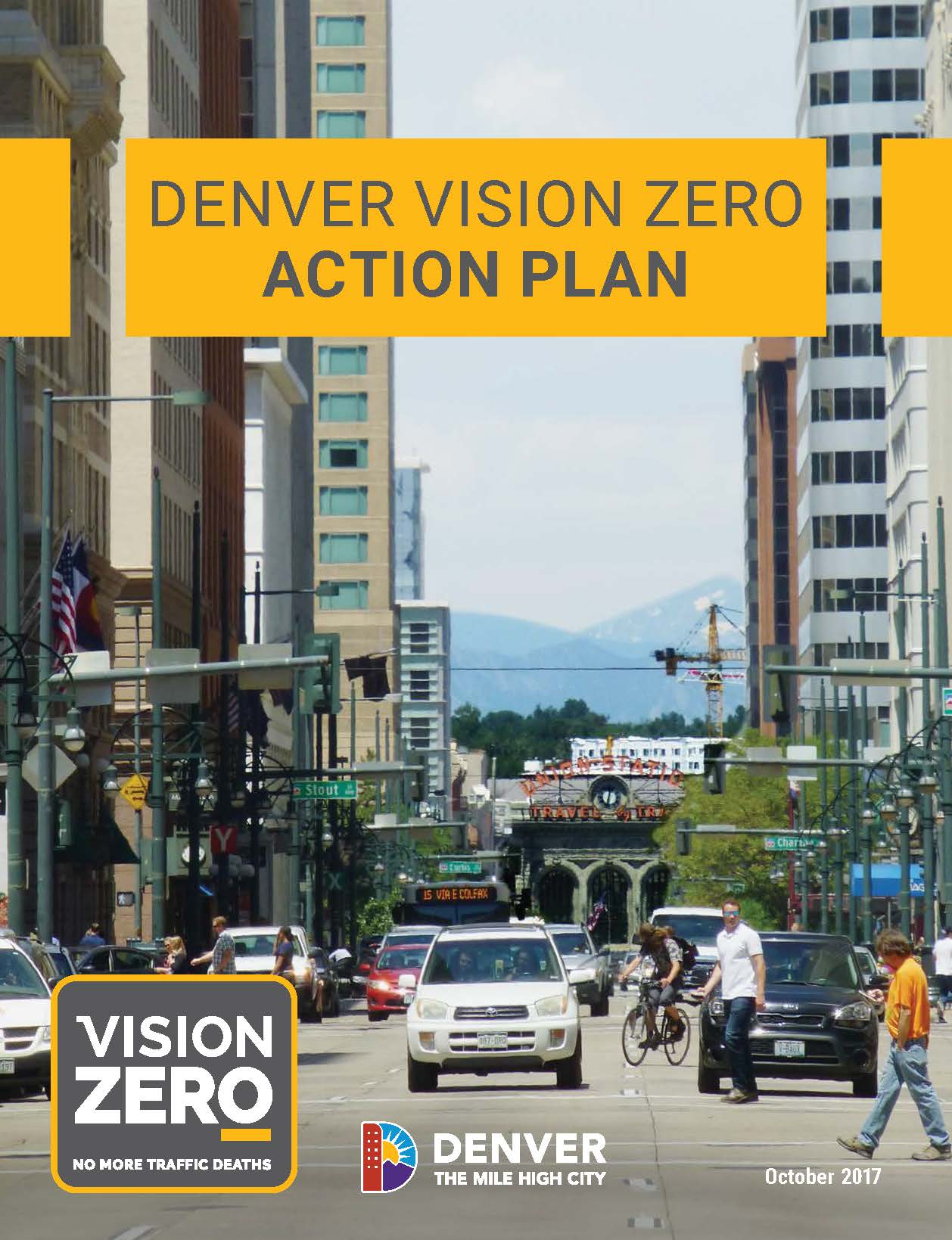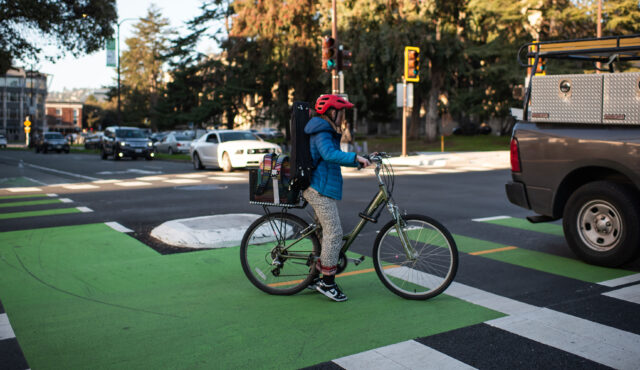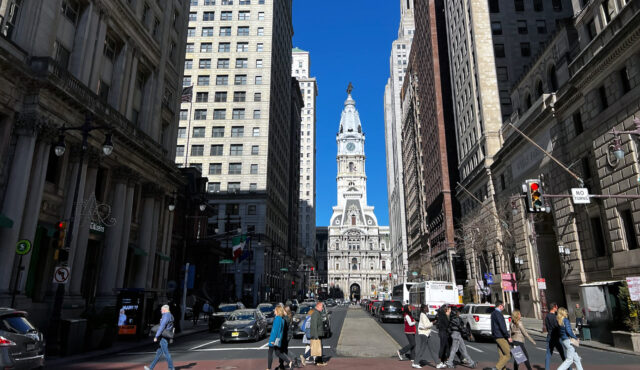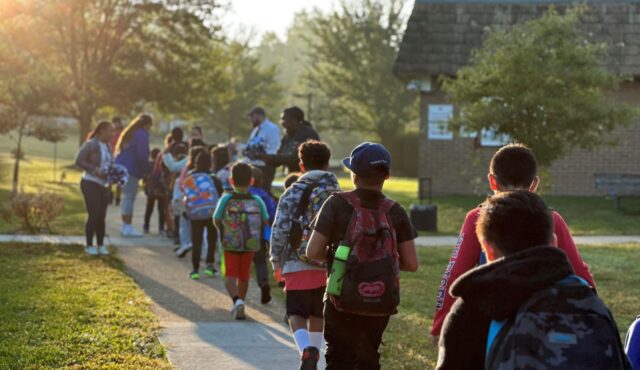The City of Denver, Colorado, has joined over 30 other communities in the United States who have set out to achieve Vision Zero—the elimination of traffic deaths and serious injuries on city streets—by 2030. On Friday, October 6, Denver mayor Michael B. Hancock unveiled the Denver Vision Zero Action Plan, a major step toward making that goal a reality.
Traffic deaths have been rising in Denver in recent years despite efforts to create multimodal streets, and the Action Plan contains nearly 70 steps that, taken over the next five years, will help the City reverse that trend. It’s a bold step forward, and one that will help make Denver’s streets safe for all users.
“[This] represents a shift in our transportation philosophy to prioritize the preservation of human life while ensuring mobility needs are met,” the Action Plan reads. “Sometimes these changes will be easy and instinctive, and sometimes they will not; regardless, we are guided by the determination to save lives and reduce injuries for all Denver residents and families.”
The Vision Zero Action Plan, one of the most detailed to be released, brings Denver to the forefront of U.S. cities that are leading the way on Vision Zero. How did it come together? The City took an approach to Vision Zero planning that was collaborative, focused on practical and realistic solutions, and resolute in its values.
Collaboration across Denver helped shape the Action Plan
Toole Design was proud to work closely with City and County of Denver staff to craft an Action Plan that was tailored to Denver’s needs.
An early step in the process was to establish a Technical Advisory Committee (TAC), with representatives from the City, the Colorado Department of Transportation, the region, and advocacy organizations like the Denver Vision Zero Coalition. And while any public process can bring together a large group of stakeholders, this group committed itself to getting to the root of causes of traffic deaths in Denver and to working together to assign specific actions. This high level of collaboration and inclusion resulted in an Action Plan that is strongly supported by the agencies and advocates alike, with targeted actions and measurable outcomes.
“It’s a lot more likely that you’re going to see solid follow-through when you have the very clear actions laid out and timelines and ownership, as this Action Plan does,” said the Vision Zero Network’s Leah Shahum. “I think this is a really great example of a model plan for other communities.”
Strong, clear values are at the heart of the Action Plan
Throughout the process, the City of Denver and members of the TAC made it very clear that preserving human life is the highest priority. This is reflected in the Action Plan and its push for Denver to make safety a core priority of its Mobility Action Plan.
Additionally, across the country, there are concerns about equity in Vision Zero. Research has shown that traffic crashes disproportionately affect low-income neighborhoods and communities of color. Denver’s Action Plan tackles concerns about equity head on, with a “streets must be safe for all,” philosophy. The Plan states that “increasing traffic enforcement—especially in Communities of Concern—could exacerbate injustices of the past.” To address this issue, the Action Plan places greater focus on street design changes and automated speed enforcement.
The Action Plan lays out a way forward that works for the City of Denver
In its Vision Zero Action Plan, the City of Denver has identified a practical, realistic set of actions designed to make substantial progress on the goal of zero traffic deaths by 2030.
The Plan prioritizes the following actions:
- Normalizing the goal of zero deaths in government culture and between agencies
- Building streets that minimize conflicts, are intuitive to use, and promote slower speeds
- Making driving speeds safer
- Making street safety part of Denver’s social fabric
- Collecting and sharing better crash and speed data to help with future analysis and messaging
The Action Plan emphasizes safe speeds and streets that have spaces for all kinds of users, both of which are essential ingredients for any Vision Zero effort. It hones in on Denver’s most dangerous streets and its most vulnerable users, identifying a High Injury Network of corridors and Communities of Concern where the City will focus many of its efforts. As Denver continues to grow, it will take the concrete actions identified in the Plan to move towards a safer and more equitable transportation future.
As Crissy Fanganello, Denver’s Director of Transportation and Mobility said at the City launched the Vision Zero Action Plan last Friday, “We will achieve our goal. We will get to zero.”


